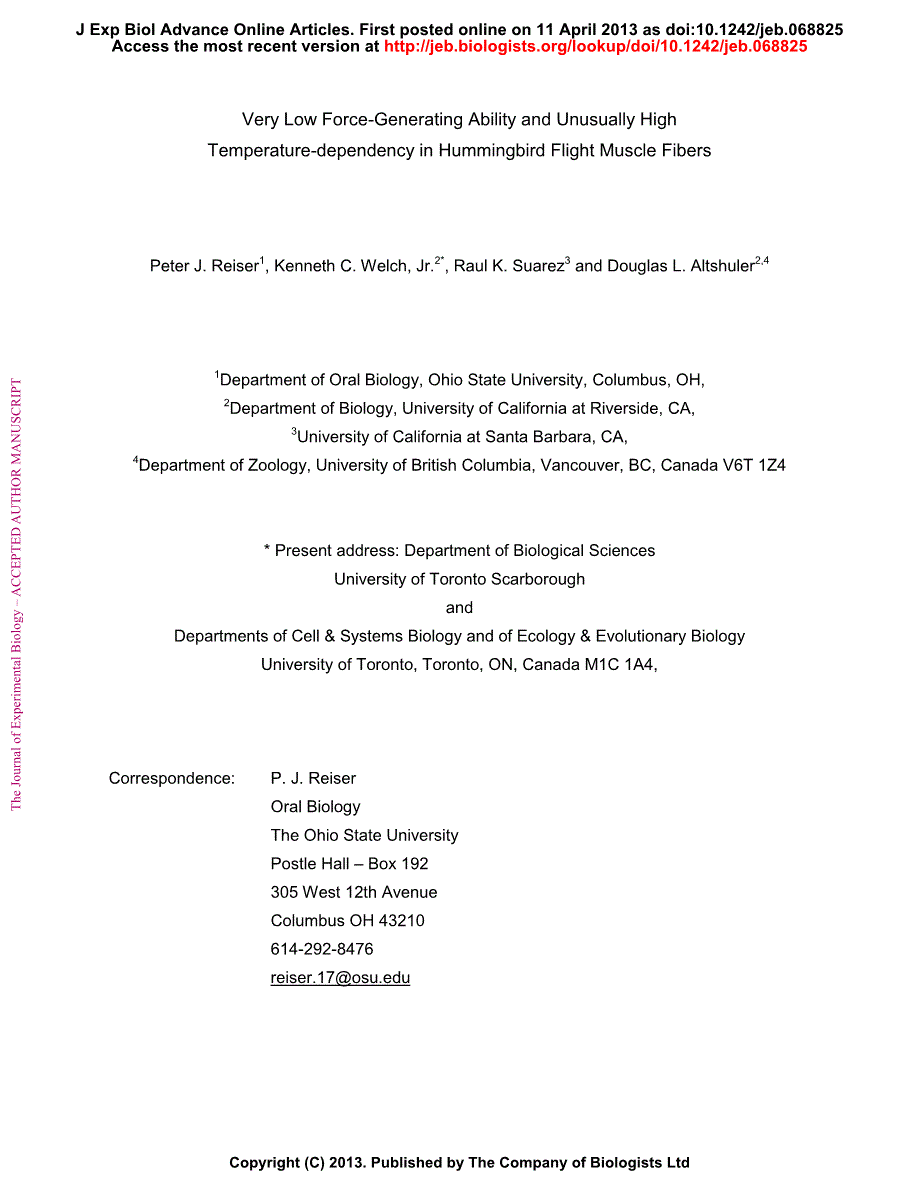Summary
Hummingbird flight muscle is estimated to have among the highest mass-specific power output among vertebrates, based on aerodynamic models. However, little is known about fundamental contractile properties of their remarkable flight muscles. We hypothesized that hummingbird pectoralis fibers generate relatively low force when activated in a tradeoff for high shortening speeds associated with the characteristic high wing beat frequencies that are required for sustained hovering. Our objective was to measure maximal force-generating ability (maximal force/cross-sectional area, Po/CSA) in single, skinned fibers from the pectoralis and supracoracoideus muscles, which power the wing downstroke and upstroke, respectively, in hummingbirds (Calypte anna) and in another similarly-sized species, zebra finch (Taeniopygia guttata), which also has a very high wingbeat frequency during flight but does not perform a sustained hover. Mean Po/CSA in hummingbird pectoralis fibers was very low - 1.6, 6.1 and 12.2 kN/m2, at 10, 15 and 20oC, respectively. Po/CSA in finch pectoralis fibers was also very low (for both species, ~5% of the reported Po/CSA of chicken pectoralis fast fibers at 15oC). Force generated at 20oC/force generated at 10oC ('Q10-force' value) was very high for hummingbird and finch pectoralis fibers (mean = 15.3 and 11.5, respectively), compared to rat slow and fast fibers (1.8 and 1.9, respectively). Po/CSA in hummingbird leg fibers was much higher than in pectoralis fibers, at each temperature, and the mean Q10-force was much lower. Thus, hummingbird and finch pectoralis fibers have an extremely low force-generating ability, compared to other bird and mammalian limb fibers, and an extremely high temperature-dependence of force generation. The extrapolated maximum force-generating ability of hummingbird pectoralis fibers in vivo (~48 kN/m2) is, however, substantially higher than the estimated requirements for hovering flight of C. anna. The unusually low Po/CSA of hummingbird and zebra finch pectoralis fibers may reflect a constraint imposed by a need for extremely high contraction frequencies, especially during hummingbird hovering.








